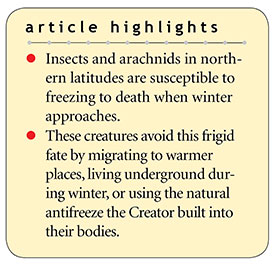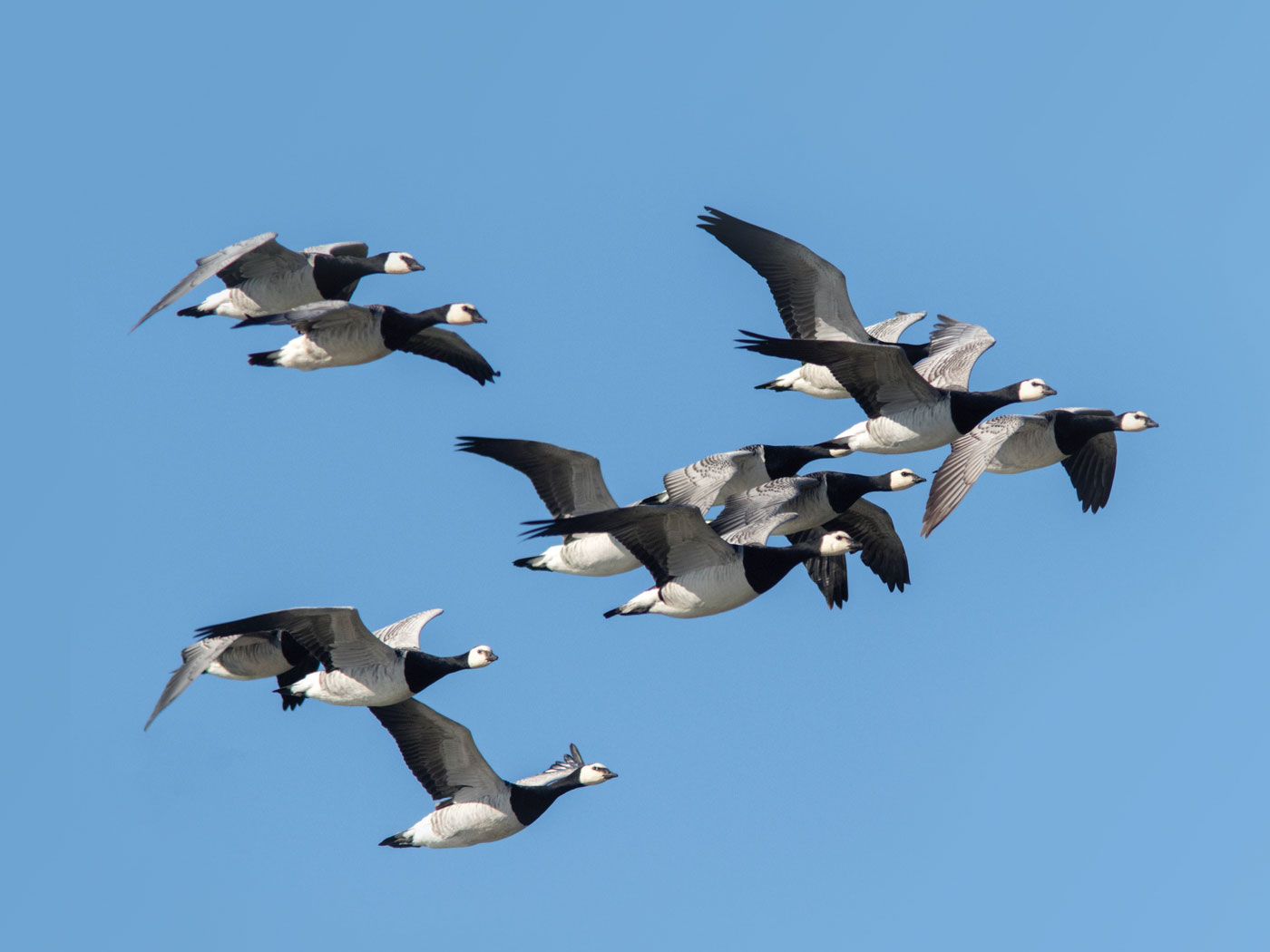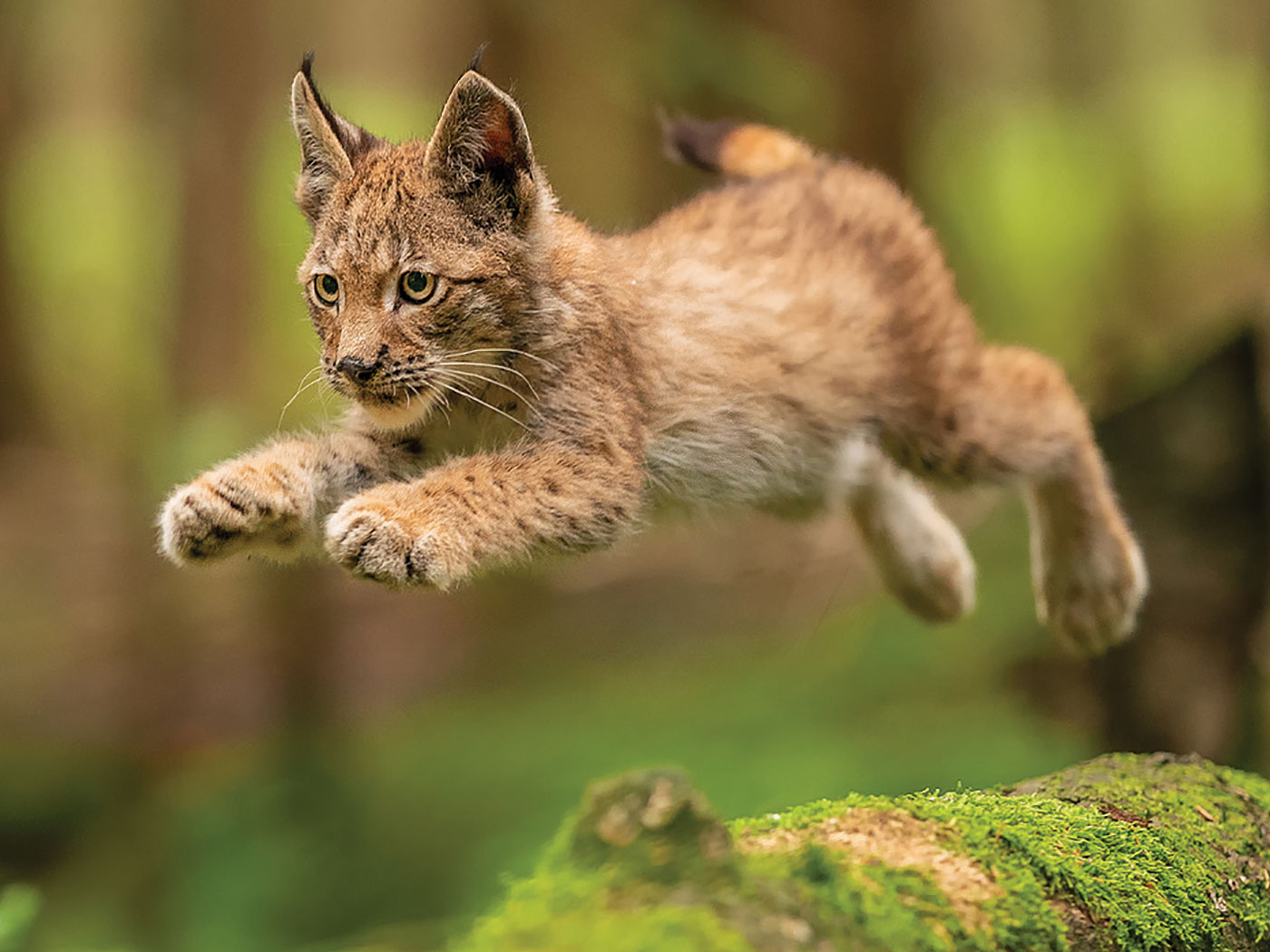 On hot July days you might miss winter’s chill.1 In higher latitudes, however, it’s the coldness that needs mitigation. For example, Arctic insects and arachnids are cold-blooded, so freezing to death is a real possibility!
On hot July days you might miss winter’s chill.1 In higher latitudes, however, it’s the coldness that needs mitigation. For example, Arctic insects and arachnids are cold-blooded, so freezing to death is a real possibility!
How can insects and arachnids withstand frigid forces of frost and freezing?2  The answer highlights a strong apologetics argument for creation. Evolutionists are routinely guilty of the oversimplification fallacy, as if creature survival traits implement “one size fits all” simplicity.3 The opposite is true—God loves variety and intricate details, so don’t be surprised when He employs diverse problem-solving strategies to overcome the same problem. With careful bioengineering (including environmental tracking programming), God has providentially prepared multi-legged creepy critters with five very different solutions to avoid being fatally frozen.
Options 1 and 2: Live Where It Never Freezes or Migrate There
The easiest survive-the-cold strategy is to live, as jungle bugs do, where it never gets cold enough to freeze. Another avoidance strategy is seasonal migration, illustrated by monarch butterflies, which migrate south for overwintering, then return north with the warmer spring weather.4
Option 3: Hibernation-like Freeze Avoidance
Some nonmigratory social insects, including ants and termites, survive winter by hunkering down in diapause, a state similar to hibernation, in underground colonies located below the frostline. There they stay warm and feed on stored food as they wait for spring.5
Options 4 and 5: Supercooling “Antifreeze” and/or Freeze Tolerance
An amazing survival option for many insects and spiders is to safeguard their hemolymph—essentially bug blood—with built-in “antifreeze” biochemicals. God designed some insects with physiologies that actually lower the hemolymph’s freezing point, using thermal hysteresis proteins (“antifreeze” proteins) in conjunction with sugar polymers such as xylomannan and/or glycerol.6,7 Most insects that survive frigid temperatures use this “antifreeze” option, but some insects are actually able to tolerate some amount of freezing.6-8
At least for insects, one way is tolerance of ice crystal formation in their bodies (freeze tolerance), and the other is avoidance of ice crystal formation (freeze avoidance). Ice crystal formation is avoided by super-cooling, which depresses the freezing point.…[facilitated by] accumulation of poly-ol compounds in the hemolymph (thus increasing the osmotic pressure), dehydration (also increasing osmotic pressure), synthesis of thermal-hysteresis protein, or evacuation or masking of ice-nucleation factors in the gut.7
Freeze-tolerant insects, like some arctic beetles, appear to employ physiologies that manipulate intracellular ice-nucleating agents and apply protein-stabilizing cryoprotectant substances to limit hemolymph ice crystal formation to extracellular compartments, and this prevents intracellular crystallization.6,8
As a matter of cold logic and biochemistry, these super-cool critters can’t be lucky products of evolutionary magic. ![]()
How would beetles evolve these magnificent adaptabilities, phenologically indexed to Earth’s annual temperature and photoperiodicity rhythms? There is no way that random mutations accidently “emerging” along insect or spider genomes could ever program bug physiologies to so successfully fill super-cold habitats. As a matter of cold logic and biochemistry, these super-cool critters can’t be lucky products of evolutionary magic. They instead demonstrate God’s creatorship!
References
- Contentment, as seasons and weather change, can be a challenge (Philippians 4:11). After the Flood, God promised that Earth would experience seasonal weather cycles, including recurring cold weather (Genesis 8:22). This promise provides predictability for humans and animals.
- Some say winter frost or icy freezes kill off the bugs. They always return in spring, so obviously they are surviving winter somehow.
- Tomkins, J. P. 2018. Human Traits Not So Simple After All. Acts & Facts. 47 (2): 15.
- Moody Bible Institute. 2010. Animal Kingdom—Great Are Thy Works. DVD. The Wonders of Creation, vol. 5. Questar, Inc.
- Proverbs 30:25. See also Cabrera, B. J. and S. T. Kamble. 2001. Effects of Decreasing Thermophotoperiod on the Eastern Subterranean Termite (Isoptera: Rhinotermitidae). Environmental Entomology. 30 (2): 166-171. (“Our results...suggest that successfully overwintering R. flavipes [termite] colonies retreat to soil depths where freezing temperatures are not encountered.”)
- Sømme, L. 1995. Invertebrates in Hot and Cold Arid Environments. New York: Springer, 194-213. Regarding xylomannan’s role in Alaska’s flat bark beetle, see Rozell, N. Alaska Beetles Survive ‘Unearthly’ Temperatures. Geophysical Institute, University of Alaska Fairbanks. Posted on gi.alaska.edu March 1, 2012.
- Murphy, J., T. Rossolimo, and S. Ada. 2008. Cold-hardiness in the Wolf Spider Pardosa groenlandica (Thorell) with Respect to Thermal Limits and Dehydration. Journal of Arachnology. 36 (1): 213-215.
- Zachariassen, K. E. and H. T. Hammel. 1976. Nucleating agents in the haemolymph of insects tolerant to freezing. Nature. 262 (5566): 285-287.
* Dr. Johnson is Associate Professor of Apologetics and Chief Academic Officer at the Institute for Creation Research.
















